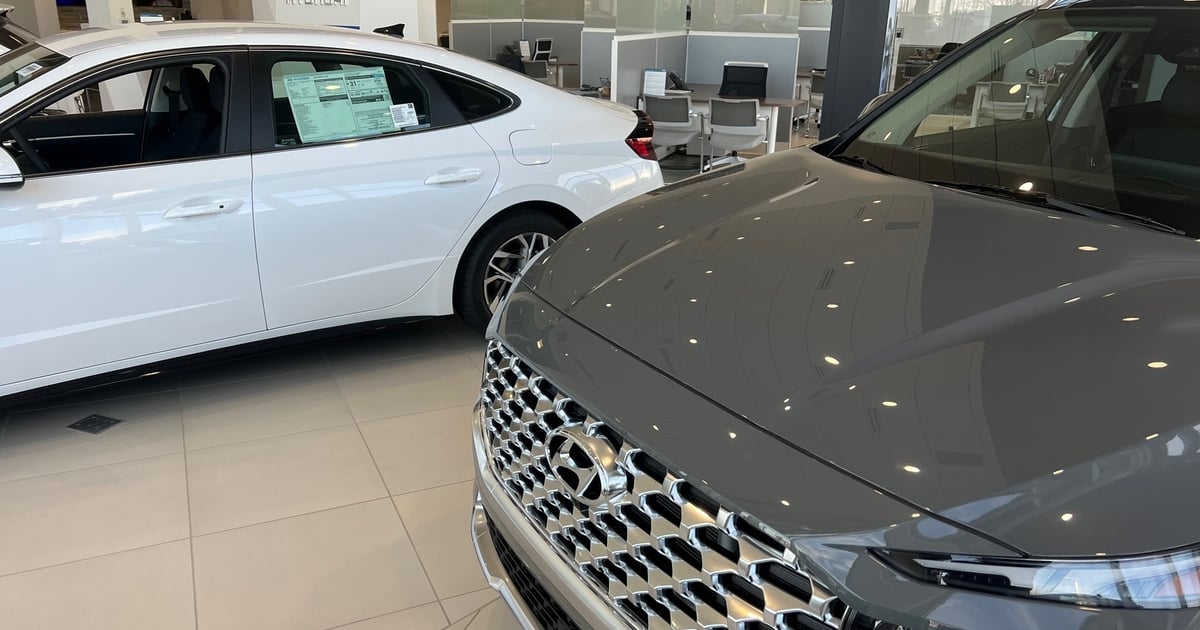
Hyundai and Kia racked up another month of U.S. sales gains in January on improved inventory levels, higher fleet volume and electric-vehicle demand.
Volume rose 9 percent to 52,001 at Hyundai and 22 percent to 51,983 at Kia, the companies said Wednesday. It was the sixth consecutive month of year over year gains for the two brands, with Hyundai edging Kia by just 18 vehicles in January.
Hyundai said retail sales rose 1 percent to 48,247 last month. The company said it ended January with 45,158 cars and light trucks in stock, up from 37,379 at the end of December and 18,060 a year ago.
Kia set a January record and said five models – Niro, Sportage, Telluride, Carnival and Forte – also posted record deliveries for the month. Combined deliveries of Kia’s electrified vehicles jumped 128 percent.
Genesis also reported record January sales of 3,905, a 7.3 percent gain.
Toyota Motor Corp., Honda Motor Co., Subaru and Mazda were scheduled to release January sales later Wednesday, followed by results from Ford Motor Co. and Volvo on Thursday. Other automakers release U.S. sales quarterly.
U.S. light-vehicle sales were expected to rise 2.4 percent to 6.5 percent in January based on forecasts from J.D. Power-LMC Automotive, Cox Automotive, S&P Global Mobility and TrueCar. Higher fleet shipments were expected to offset a drop in retail volume, analysts said.
Fleet deliveries were forecast to rise 59 percent to 74 percent to 168,000-183,000 in January from a year earlier, TrueCar, J.D. Power and LMC Automotive estimate. As the chip shortage eases, automakers are ramping up output and filling a backlog of orders from rental operators and other commercial and government customers.
Automakers are counting on continued pent-up demand in the wake of tight but improving inventories to drive sales higher this year, after industry volume slumped 8 percent to 13.865 million in 2022.
Chris Hopson, principal analyst at S&P Global Mobility, said consumers face an uncertain purchase environment as 2023 unfolds.
“While positive developments regarding mildly retreating vehicle prices and rising pockets of inventory bode well, interest rates remain high and economic headwinds persist,” said Hopson.
Affordability, driven by elevated transaction prices, also remains a hurdle. J.D. Power and LMC Automotive estimate the average new-vehicle retail transaction price in January will reach $46,437, a 4.2 percent increase from January 2022, but a decline from a record high of $47,362 in December.
“Consumers continue to face rising new-vehicle prices across the industry,” said TrueCar analyst Zack Krelle. “However, the pace has slowed as inventory for many high-demand vehicles grows. Fewer vehicles are seeing markups, particularly for import brands which faced pronounced scarcity during the peak of the shortages.”
The seasonally adjusted, annualized rate of sales was expected to range from 15.5 million to 16 million last month, according to forecasts, well ahead of the 13.6 million rate in December and 15.3 million in January 2022. It would also mark the first time the SAAR has topped 15 million since October.
Inventory remained well below normal levels, but retail stockpiles topped 1 million for the fourth-straight month in January, J.D. Power and LMC Automotive said. Most Asian brands, which are generally more reliant on Chinese parts supplies, which remain volatile given the country’s recent COVID-19 outbreaks, are still struggling to rebuild car and light-truck stocks.
Discounts also remained low but continued to creep up at some automakers. TrueCar estimated January incentives averaged $1,441 per new vehicle, down 20 percent from $1,804 in January 2022 but up 8.1 percent from December’s $1,333 level. General Motors, Ford, Stellantis, Nissan, Subaru and Volkswagen all hiked discounts last month over December. (See chart above.) J.D. Power and LMC Automotive estimated January incentives averaged $1,260, a 7 percent decrease from a year earlier.
- There were 24 selling days last month, the same as January 2022 but three fewer than December.
- The average incentive on lights trucks in January was expected to tally $1,265, down $98 from a year earlier, while the average spending on cars was expected to be $1,290, down $31 from January 2022, J.D. Power and LMC Automotive projected.